How to Dehydrate Ginger and Make Ginger Powder
Dehydrate ginger and make your own ginger powder and never buy another bottle of ginger powder, EVER!
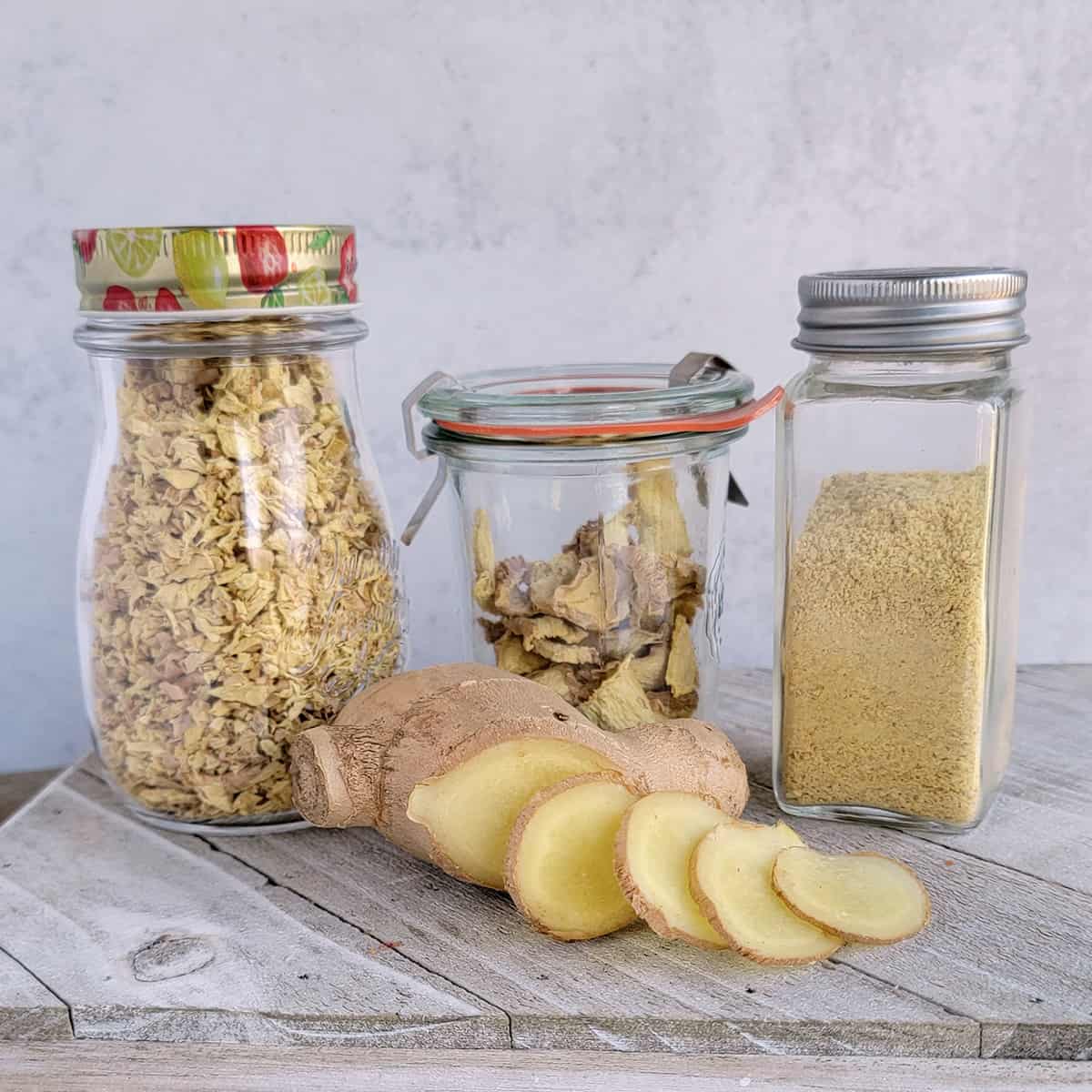
Ginger is actually a rhizome of the Ginger Plant (but is commonly called ginger root, instead). Each “hand” is full of sweet and spicy flavor that enhances many Asian dishes and makes for a great way to flavor teas and other beverages.
Ginger is well known for calming upset stomachs and relieving cold symptoms.
The problem with buying ginger powder from the store is that, unless you are buying in bulk, or in a very busy grocery store with a high turnover of its spice section, the powdered ginger you are buying may be quite old.
Fresh ginger powder is amazingly pungent and perfect for your spice cabinet. The secret is…don’t store powder 😉 We’ll get to that in a minute.
Because it’s so easy to do yourself, let’s vow to never buy it again, shall we?
Tools for This Project
- Dehydrator (Excalibur or Cosori are my recommendations)
- Food Processor or knife
- Coffee grinder
- Jars and lids of your choice
How to Dehydrate Ginger Root
Step One: Peel Ginger
Ginger does not need to be peeled if the skin is soft and pliable. If it is very rough, discolored, and woody, you’ll want to peel it, especially if you shred the rhizome.
Ginger’s most tender flesh is right below the skin, so you can use a few methods of peeling the root if you’d like. I still prefer a y-vegetable peeler,
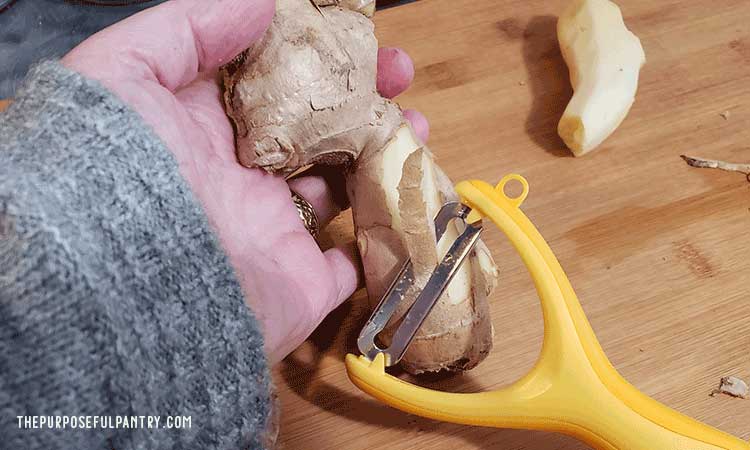
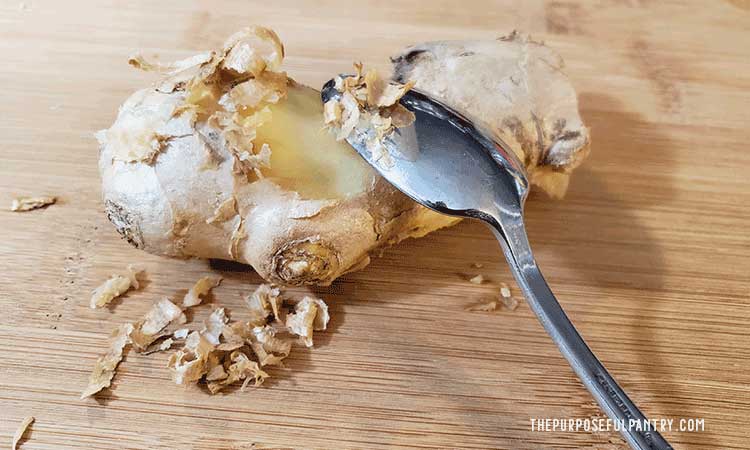
But you can also use a spoon to scrape off the skin. This technique is said to preserve even more of the ginger than using a knife to peel it, but I find it a much more awkward way of doing it, especially if you have a really knotty piece of ginger.
STEP TWO: Prepare
• Mincing
I prefer this method for bulk drying of ginger. It’s so much quicker, stores more efficiently, and powders easily.
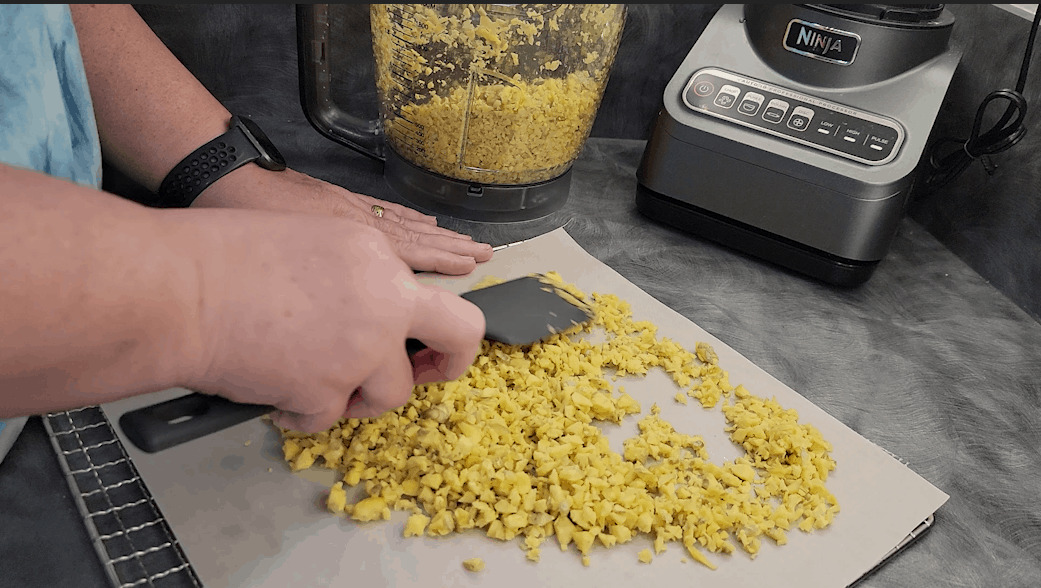
• Slicing
Slice, whether you cut into discs or use a mandolin for thinner discs, makes preparing go quickly. I prefer using a mandolin because it goes so quickly. However, you can easily slice discs with a knife, as well.
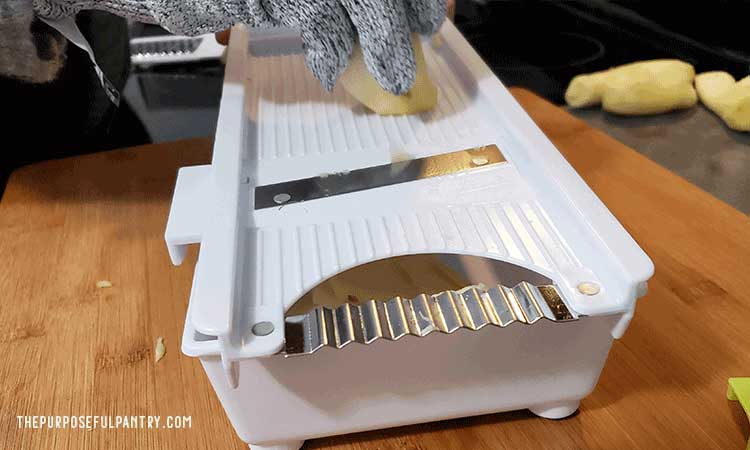
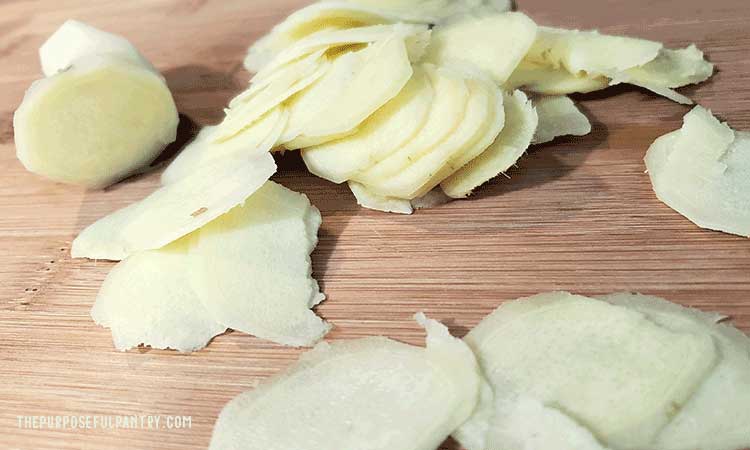
Please remember, whenever using a mandoline – protect yourself with a good safety cutting glove. I really prefer using a cutting glove over the mandolin guard for better control.
NOTE: I have since updated my glove to an even safer cutting glove after this one failed when trying to cut potatoes.
• Grating
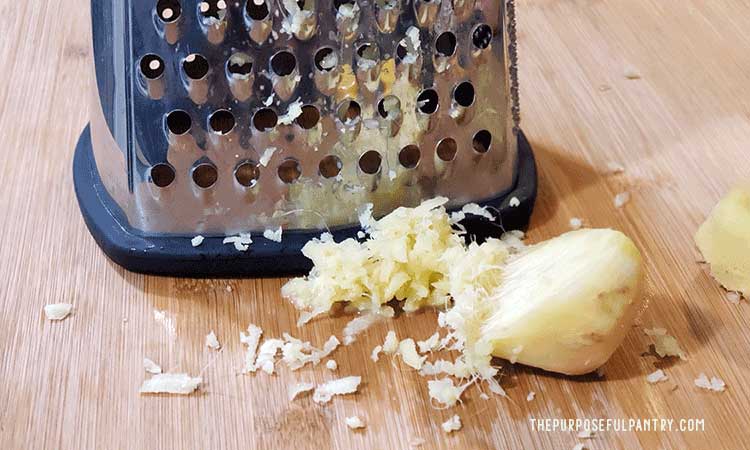
While grating makes sure you have a lot of teeny dehydrated pieces left at the end, you are also left with lots of fibrous issues, lots of juice lost (and while moisture loss is what we’re intending with dehydrating, the juice lost from grating is also flavor being wasted). Be sure to pat the grated ginger dry to help remove that extra moisture.
If you’ve grated your ginger, you’ll want to use some nonstick mats on your trays. Ginger shrinks a ton, so the pieces will easily fall through the holes. It will help with storage, too.
STEP THREE: Dehydrate Ginger at 95°F / 35°C for 4-8+ hours.
While the recommended time for ginger is 125F/52C, I prefer to drop the temperature to get more flavor retention. It may take a little extra time, but it’s really worth it.
Ginger dries very quickly. But remember..drying times are relative. Depending on your preparation, your home’s humidity, and your machine, times will vary.
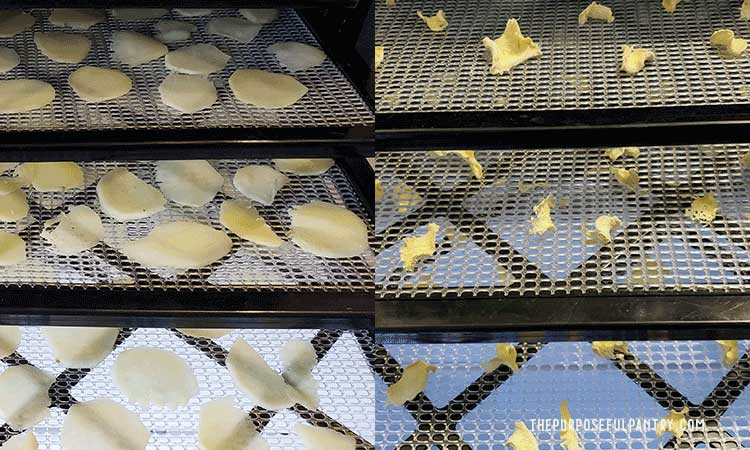
How to Know When Ginger is Done
Ginger is done when the pieces become brittle. Test a few pieces by pulling them from the machine, allowing them to come to room temperature, then breaking them.
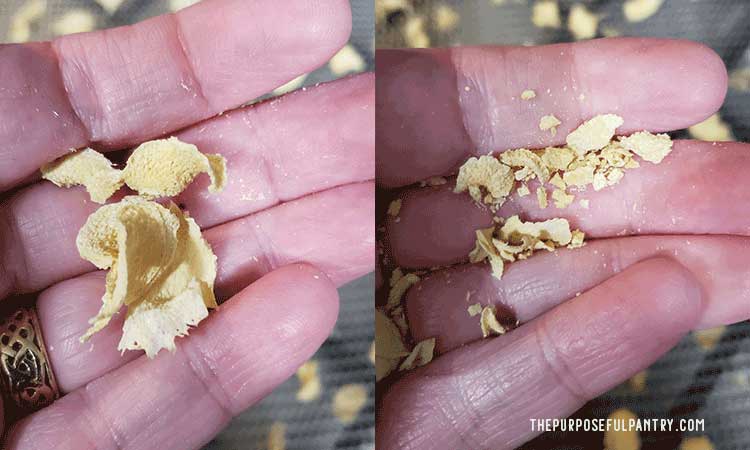
How to Store Dehydrated Ginger
Store Ginger in an airtight container. It lasts for about eighteen months conservatively. But as with all spices, if you cannot open the jar and identify it immediately, it’s old and you need more.
How to Make Ginger Powder
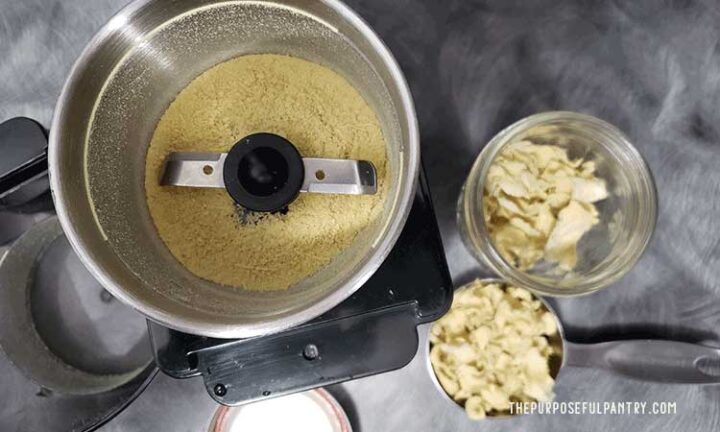
Simply place ginger shards in your grinder of choice – I use both a Cosori coffee grinder or a NutriNinja bullet blender.
Because you don’t want to powder more than you can use in a month or two, I don’t recommend large blenders or food processors.
If you have issues with your ginger powder clumping – try these tips.
Yield
1/4 C Dehydrated Ginger = 1 heaping Tablespoon of ground ginger
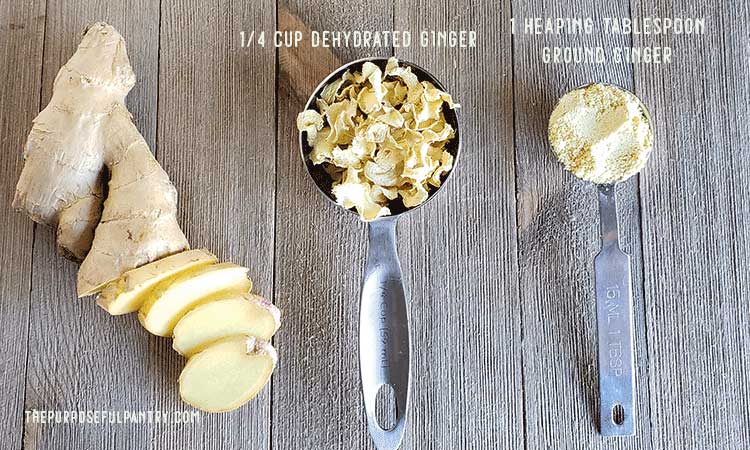
How to Store Ginger Powder
- Store in the whole spice form as much as possible. However, no one wants to drag out their grinder every time they reach for a spice.
- Grind only what you think you’ll use in a month, and store the rest whole.
- Keep in an airtight container, and store in a cool, dry, dark space.
Is My Ginger Powder Still Good?
While it is said that dried powders last for about six months – you can test yours by sniffing. If you can rub it in your fingers, and readily identify the spice, the oils are still thriving, and you can continue to store. If the spice smell is faint or mostly nonexistent, it’s time to grind some more!
Watch me make Ginger Powder in this video:
Uses for Ginger Powder
- Seasoning – just like with store-bought ginger powder, use it to create seasoning blends
- Breading – add to chicken breading for a nice kick
- Tea blends – add to favorite tea blends to change the flavor
- Ginger snap cookies
- Rubs
- Add to broths to create an Asian flare
- Add a little kick to the Pumpkin Spice Coffee Mix with Pumpkin Powder
How to Store Fresh Ginger
Purchase healthy ginger
You want to choose ginger that is smooth and heavy for its size. Wrinkled, soft, or moldy ginger isn’t worth buying. Because most of us can get ginger in a bulk bin in the produce section now, pick through carefully to get the best you can get.
If you can find Spring Ginger in your stores, grab it. It’s picked a little sooner than most ginger is, so the flesh is less fibrous, the skin quite thing, and you won’t even have to peel it!
Store in Fridge
Store it in a freezer storage bag in the coldest part of your fridge. If you’ve already cut into it, make sure to blot away any moisture on the cut end before storing. You can also wrap it in a paper towel and store in a container. These methods keep for a couple of weeks.
If you can’t use it in time, move to the freezer method.
Store in Freezer
Toss the ginger into a freezer storage bag, squeeze out all the air, and put it into the freezer. You can grate ginger fresh, then flash freeze it in mounds and store in the freezer for about six months in airtight storage bags to keep all the air out.
You can even grate ginger, skin, and all, straight from the freezer.

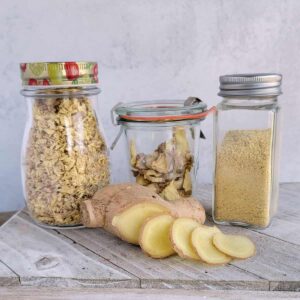
Dehydrate Ginger & Make Ginger Powder
Equipment
- Food Processor
- Box Grater
Ingredients
Instructions
Dehydrate Ginger
- Prepare ginger in slices, chunks or shreds
- Place on dehydrator trays
- Dry at 95F/35C for 3-8 hours
- Check for dry, breakable pieces
- Condition
- Store in an airtight container for up to two years
DIY Ginger Powder
- Place ginger pieces into a coffee grinder
- Pulse 3 or 4 times, then continuous grind for about 15 seconds.
- Repeat if necessary
- Store in an airtight container with desiccant pack if desired.
Video
Darcy’s Tips
Nutrition
Nutritional information is an estimation only. Nutrient information for dehydrated foods is based on fresh. Use 1/4 of the servicing size for the same nutrient information. Thus 1 Cup of fresh fruit has the same sugars as 1/4 dried.
©ThePurposefulPantry. Photographs and content are copyright protected. Sharing of this recipe’s link is both encouraged and appreciated. Copying and/or pasting full recipes to any social media is strictly prohibited.

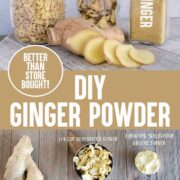
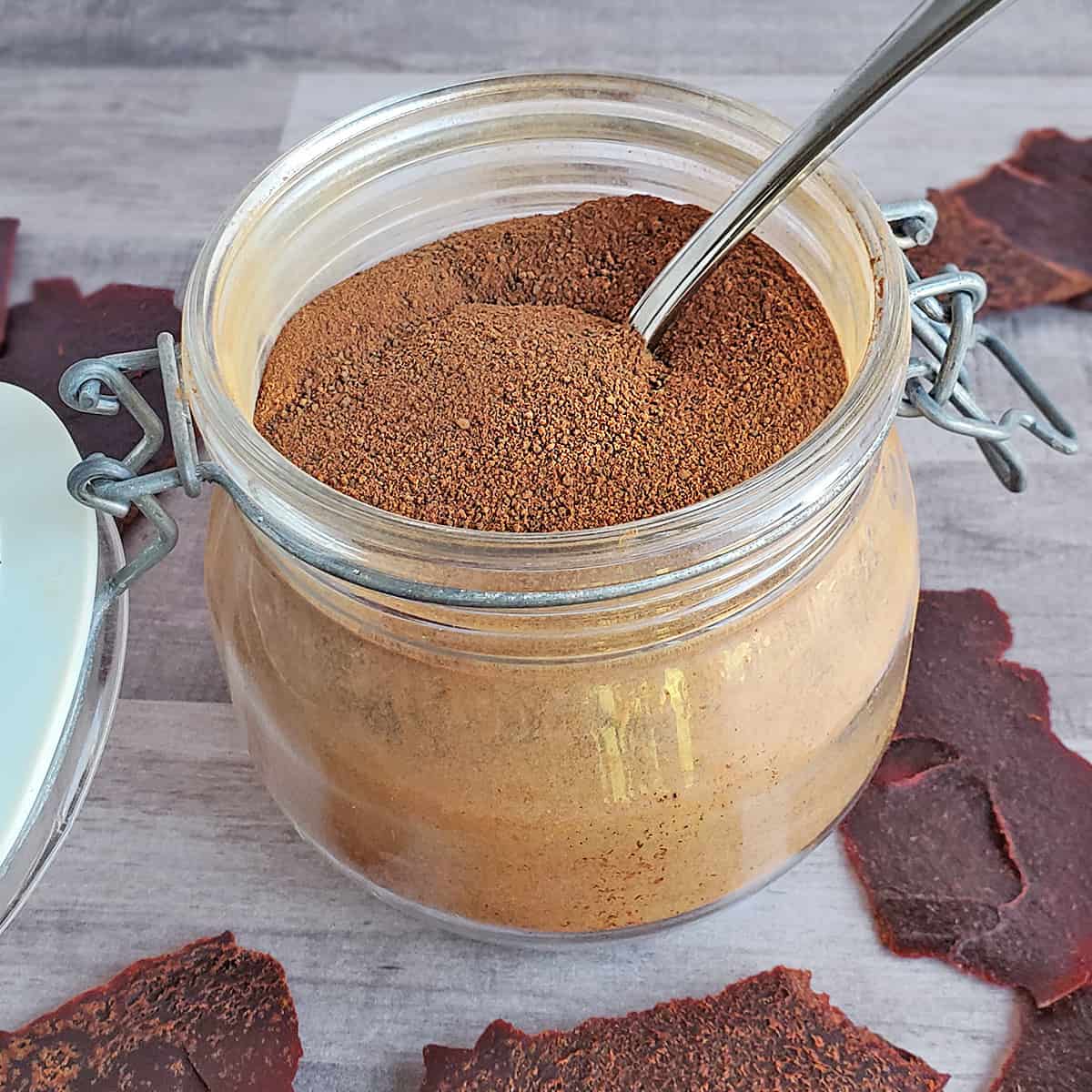
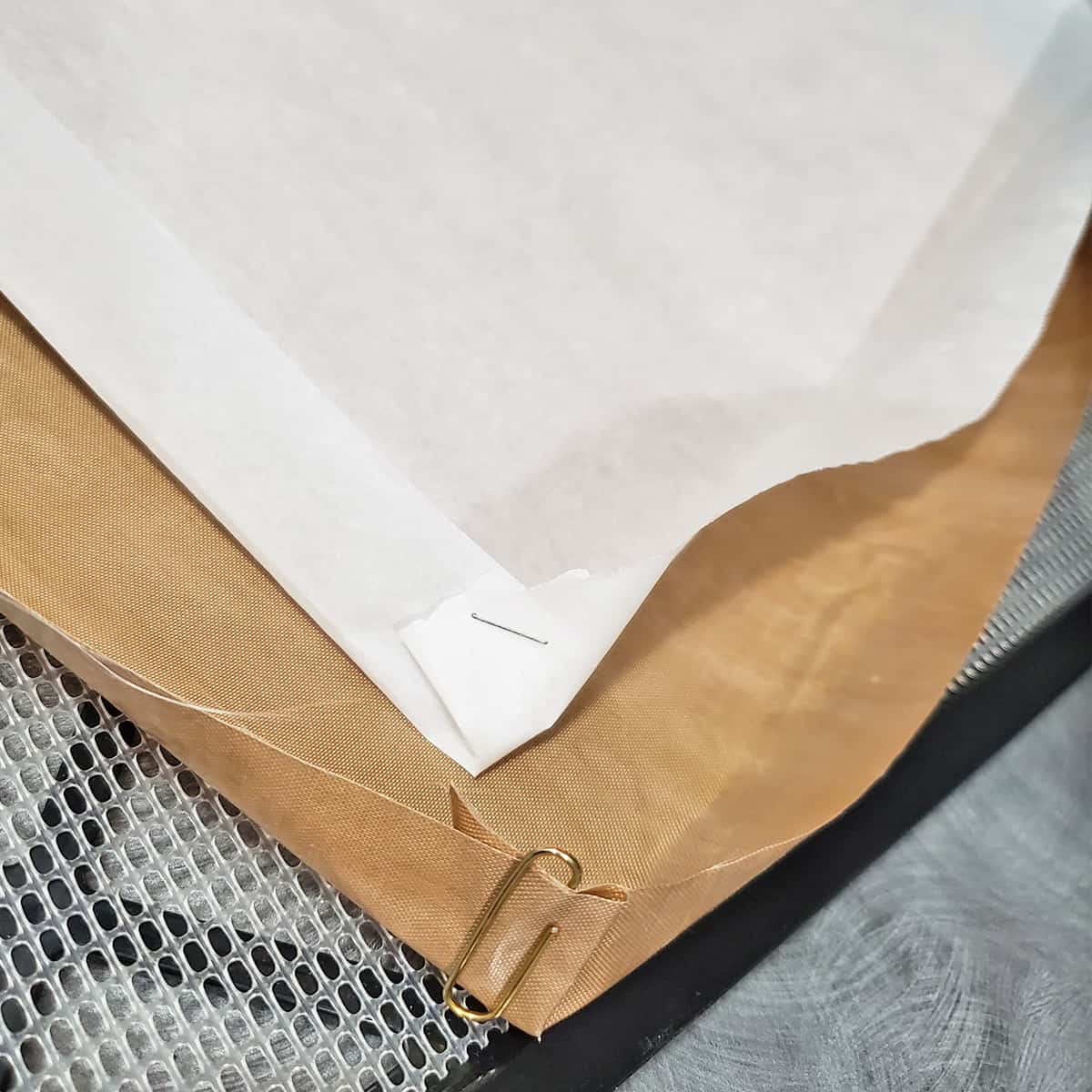
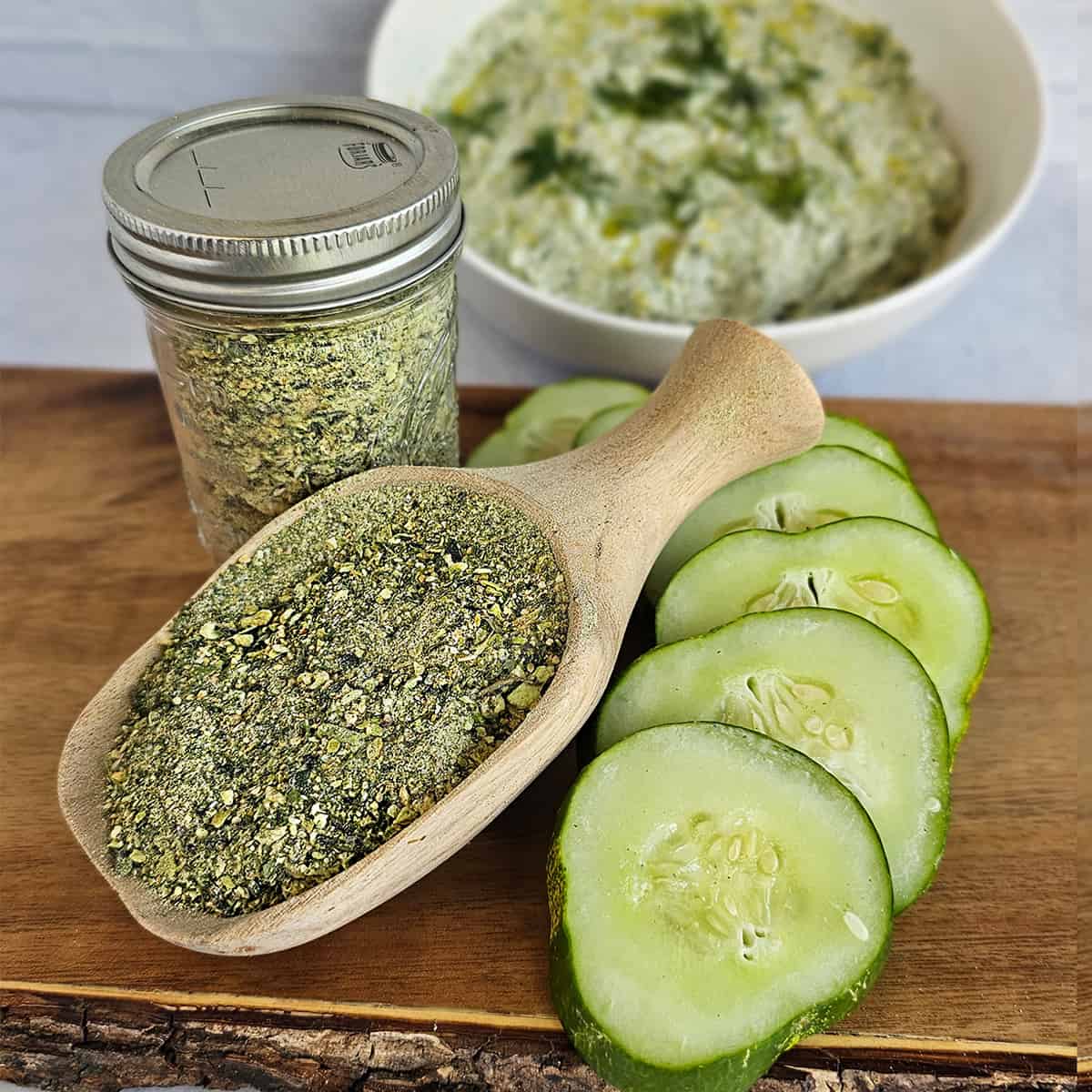
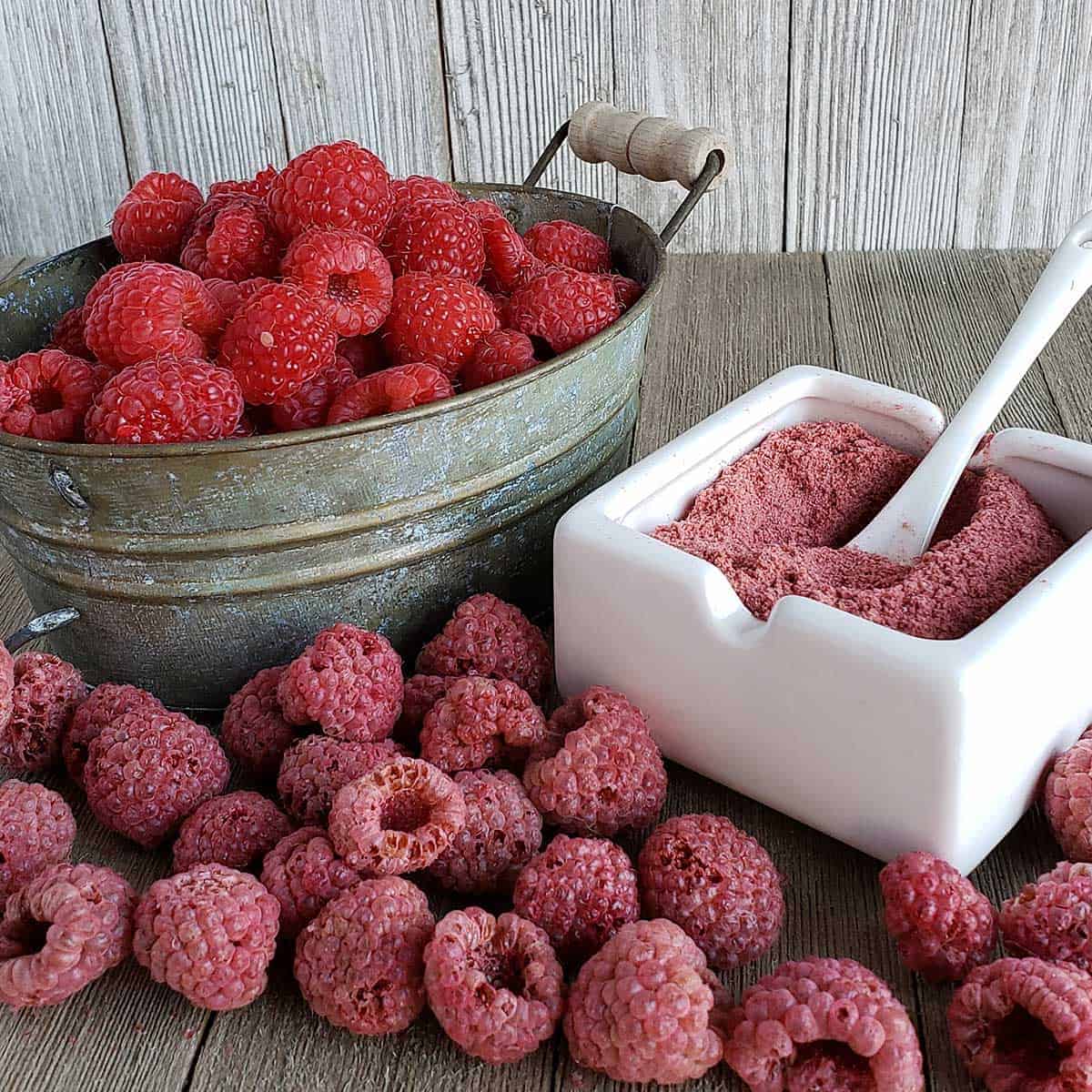
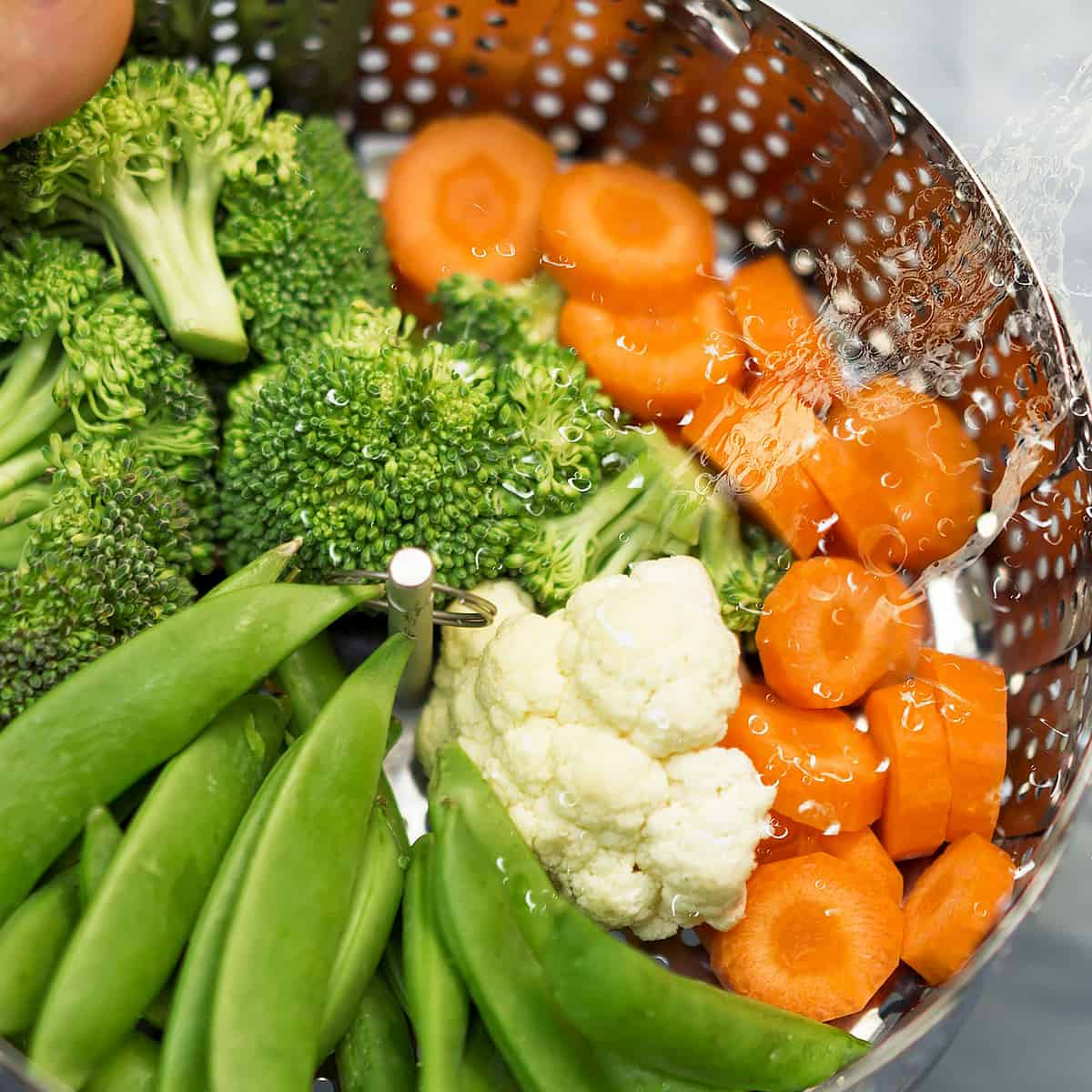
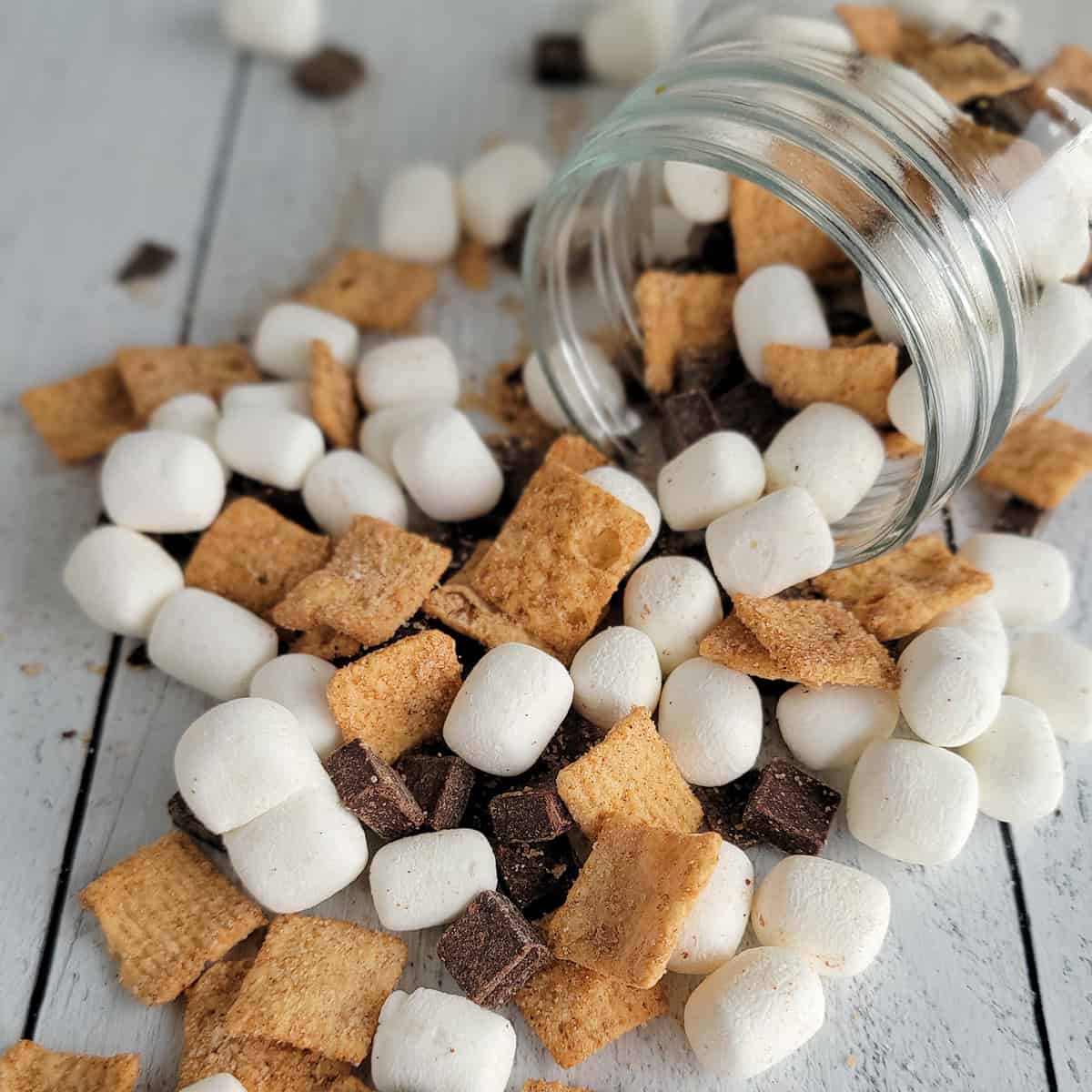
Great idea! I feel like if I buy it fresh I don’t use any more fast enough and end up throwing it away.
Is ginger powder the same as ground ginger? If not, do you know an approximate conversion?
It’s the same thing and tastes much better than what you buy in the store.
Hi Darcy,
I’m with you on dehydrating ginger. My fav!
Thank you very much,
Linda Skibsted
I’ve never tried making my own ginger powder! Great idea! Saw your post on the Simple Homestead hop this morning. 🙂
I hope you’ll try it, Lisa! It’s SOOOOOOO much better than what you get at the store! Thanks for stopping by!